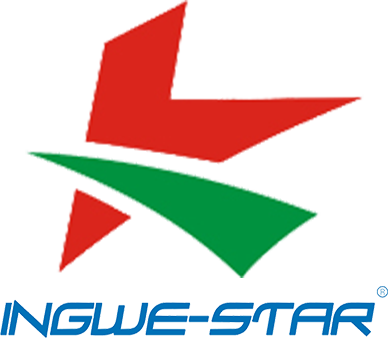LED Paper technology, applications, and benefits for modern lighting solutions
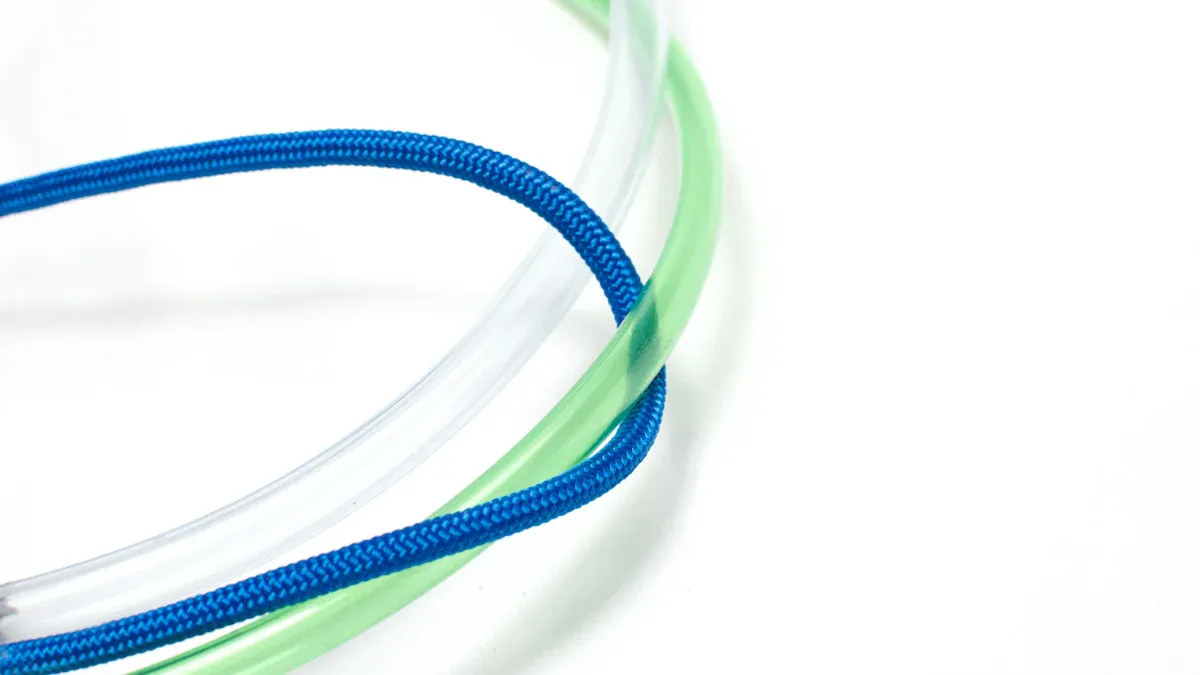
Have you ever thought about changing a room with a thin light sheet? LED paper lets you do this. This material is very thin and bends easily. You can use it for lighting in ways old lights cannot. LED paper saves energy and helps you make cool lighting designs. It fits any style you want. Many lights today need to be efficient and good for the planet. Now, you can try lights that use less energy. These lights give you new ways to design modern spaces. This technology changes how you see lighting. It also gives you ideas for new lighting designs.
Key Takeaways
LED paper is a thin and bendy light sheet. It saves energy and fits where old lights cannot go.
It gives bright, cool, and long-lasting light. You can bend, cut, or shape it for fun designs.
You can use LED paper in homes, stores, offices, and events. It helps make spaces look modern and cool.
LED paper saves you money because it uses less power. It also lasts much longer than old lights.
This technology is good for the Earth. It makes less waste and uses safer, recyclable stuff.
LED Paper Overview
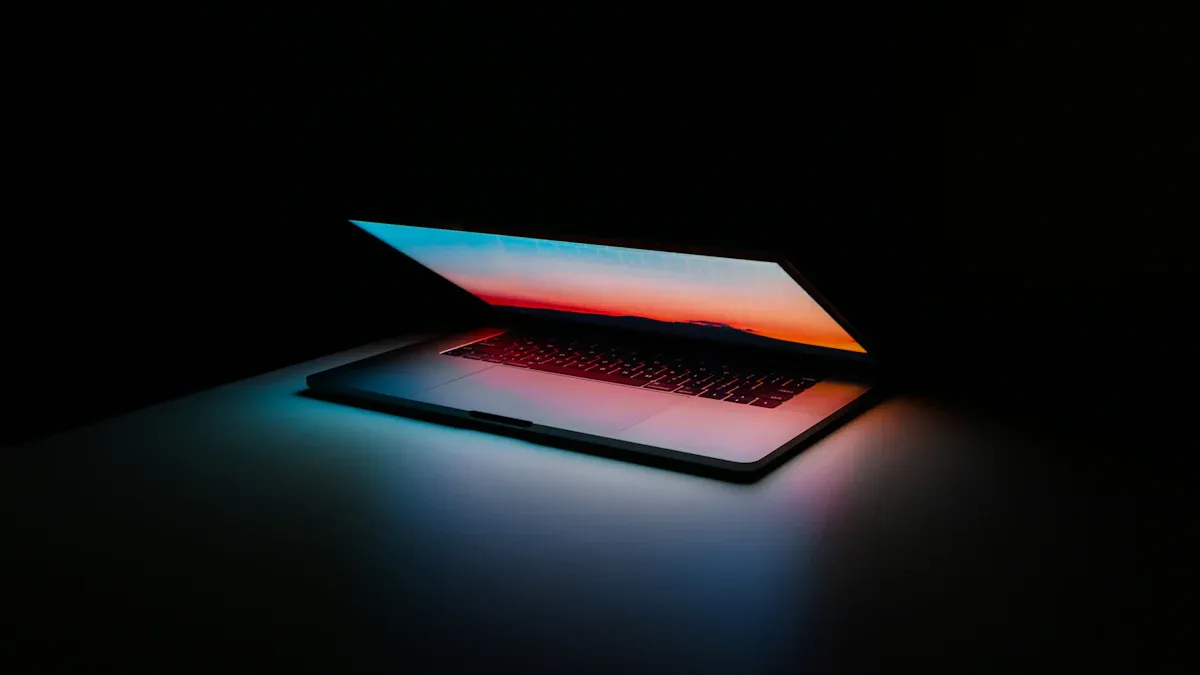
What Is LED Paper?
You may ask how LED paper is not like other lights. LED paper is a thin sheet that uses special LED technology to make light. You can bend or cut it to fit many shapes and places. This lets you put light where normal lights cannot go. LED paper is good for art, homes, and stores. You can use it to make walls, ceilings, or furniture shine. This new lighting gives you more ways to design your space.
LED paper uses special materials and LED devices to make light. The sheet stays cool, so it is safe to touch. You do not need big lights or heavy tools. It is light and easy to use. LED paper makes lighting more flexible. You can use it for small or big projects.
Key Features
LED paper is special because it has many good features. Here are some of the best ones:
Ultra-Thin Design: The sheet is much thinner than old lights. You can hide it or use it in small spaces.
Flexibility: You can bend, fold, or shape LED paper. It does not break, so it is great for fun lighting ideas.
Lightweight: You can carry and put up LED paper easily. It does not make your project heavy.
Energy Efficiency: LED technology uses less power than old lights. You save energy and pay less money.
Cool Operation: The sheet does not get hot. You can touch it, and it will not hurt things.
Long Lifespan: LED paper lasts a long time. You do not have to change it often.
Note: LED paper uses advanced LED technology to make bright light. It turns more power into light, so it works well. How well LED devices work depends on things like internal quantum efficiency and external quantum efficiency. These things help LED paper give bright light and use less power. You get better light with less waste.
You can use LED paper for many kinds of lights. It works in homes, offices, stores, and public places. You can also use it for art, displays, and events. The technology for LED paper keeps getting better. You will see even more ways to use this lighting soon.
How LED Paper Works
Structure and Materials
You may wonder why LED paper is so thin and strong. The answer is in how it is made. Engineers use three layers of carbon fiber and epoxy. This makes the sheet about as thick as normal paper. You can roll it up or lay it flat. This gives you many ways to use it for lighting.
The main layer has carbon fiber and epoxy. This keeps the sheet light and easy to bend.
Thin wires are inside the layers. These wires bring power and data to the LED systems.
There is a small patch on top. This patch can have sensors for motion or temperature, and a blue LED.
The whole sheet can handle shaking, bumps, and even tough space conditions.
Note: This new technology lets you use LED paper where other lights would break. You get both strength and flexibility in one sheet.
Tests and computer models show these materials work well together. You can count on LED paper to last, even in hard places. The design fits modern lighting needs and works with many kinds of LED technology.
LED Integration
LED paper gives bright and even light because of how the LEDs are put in. Engineers place the LEDs inside the layers. This keeps the sheet thin and smooth. The LEDs connect to the wires inside the sheet. You can control the lights easily, and they respond fast.
LED technology in these sheets uses less energy than old lights. You can shape the light for your project. The technology lets you add smart things, like sensors or color changes. You can use LED paper for simple or fancy lighting.
LED paper works with other systems. You can connect it to smart home tech or building controls. This makes your lights more helpful and modern. The way LEDs fit in the paper shows how much lighting has improved.
Types of LED Paper
Flexible LED Paper
Flexible LED paper lets you make many cool designs. You can bend, roll, or cut it to fit shapes. It uses a special paper base that is very flat and light. You can put it up fast and store it without trouble. Flexible LED paper is good for big spaces and low ceilings. You can use it as wallpaper or in packages. It can have sensors to measure things or control lights.
Here is a table that shows how flexible and rigid LED paper are different:
Characteristic | Flexible LED Paper (e.g., Paper-Flex) | Rigid LED Paper (Rigid PCBs) |
|---|---|---|
Base Material | Paper (sustainable, breathable, ultra-flat) | Rigid substrates like FR4 |
Breathability | Yes, prevents moisture accumulation | No |
Thickness | Ultra-flat, approx. 0.8 mm after assembly | Thicker, less flat |
Weight | Extremely lightweight | Heavier |
Form Factor | Roll form, suitable for large-area, low installation height | Rigid panels, limited flexibility |
Installation & Storage | Time-saving installation, reduced storage and transport costs | More cumbersome due to rigidity |
Customization | High customization with decorative surfaces and sensor integration | Limited customization and integration options |
Application Potential | Wallpaper, packaging, advertising, sensors for data measurement/control | Mainly lighting, limited to rigid applications |
You can use flexible LED paper for accent lights, backlights, shelf lights, and stairs. It is safe for DIY projects and works with batteries or solar power. You have lots of ways to design your room.
Rigid LED Paper
Rigid LED paper gives strong and steady light. You cannot bend it, but it shines brighter and lasts longer. This type uses a hard base, like FR4, so it is heavier and thicker. You see rigid LED paper where bright, steady light is needed.
You might pick rigid LED paper for these reasons:
You want very bright or wide light.
You need tough lights for long, straight places.
You want exact light for work or growing plants.
You want lights that last and stay in one spot.
Rigid LED paper is best for custom straight lights, plant lights, and bright work lights. It gives more power and lasts longer, but you cannot bend it. If you need lights that stay put and shine bright, rigid LED paper is a good pick.
LED Paper Applications
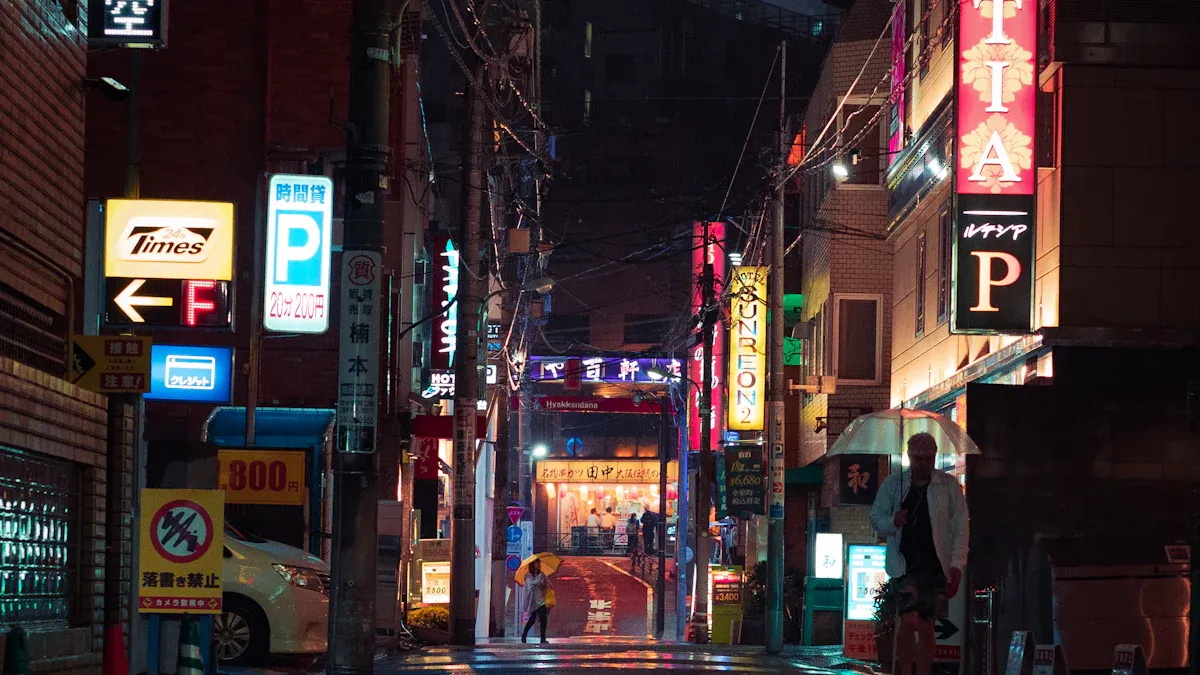
Architectural Lighting
LED paper can change how a room looks and feels. In new buildings, it gives smooth light on walls and floors. You can shape the light to fit any design you want. LED paper fits in small or curved spaces. This means you can put light where old lights cannot go. Use it for accent walls or under cabinets. You can even put it inside furniture. These uses make rooms brighter and more friendly. LED paper can also highlight art or special things in a building. Volumetric lighting lets you control the mood and style.
Signage and Displays
LED paper is great for digital signs and displays. You can show bright pictures, videos, and even touch features. Here is a table that shows how LED digital signs are different from old signs:
Feature | LED Digital Signage | Traditional Signage |
|---|---|---|
Display Technology | Uses LED technology for high brightness, dynamic, full-color images and videos. | Static printed materials with fixed content. |
Content Updates | Remote, real-time updates via software. | Requires physical replacement, time-consuming. |
Interactivity | Supports touchscreens and sensors for audience interaction. | No interactive features, one-way communication. |
Energy Consumption | Higher initial cost but lower long-term energy use and operating costs. | Lower initial cost but higher maintenance and replacement costs. |
Environmental Adaptability | Suitable for indoor and outdoor, high visibility even in bright light. | Outdoor visibility limited by lighting conditions. |
Maintenance & Durability | Simple maintenance, long lifespan (tens of thousands of hours). | Susceptible to environmental damage, frequent upkeep. |
Return on Investment | Higher ROI due to dynamic content and customer engagement despite higher upfront cost. | Lower upfront cost but potentially lower long-term ROI. |
Customization | Highly customizable in size, shape, and resolution. | Limited customization due to printing/material limits. |
You can change what is on the sign right away. You can add touch screens or sensors for fun features. LED paper makes these signs more flexible and saves energy. You can use them in stores, offices, or public places.
Decorative Uses
LED paper can make any room look special. Designers use LED and crystal wallpaper for glowing walls. These walls shine with color and texture. This kind of lighting adds warmth and style to bedrooms and hotels. You can pick patterns and colors you like. Paper covers for LED lights spread the light softly. This makes rooms feel cozy and nice. You can choose shapes like squares or flowers. Some people use styles from different cultures, like Asian lanterns. Using eco-friendly materials is good for the planet.
Paper covers spread light and look pretty.
You can match designs to any room you want.
See-through paper makes a soft glow for lighting.
It is easy to put up and take down, so you can change things fast.
Event Lighting
LED paper helps you make cool effects at events. You can use it for stage backgrounds, banners, or costumes. Volumetric lighting lets you change colors and patterns fast. You can set the mood for parties or concerts. LED paper is light and easy to carry. You can set it up quickly. It is good for short-term uses, like pop-up shops or outdoor festivals. Volumetric lighting from LED paper makes every event special. You have many creative choices.
Tip: Try LED paper for custom signs or glowing decorations at your next event. You can wow your guests with cool lighting effects.
Benefits of LED Paper
Energy Efficiency
You want to use less energy and pay lower bills. LED paper helps you do this in a strong way. It uses advanced LED technology that makes more light and less heat. This means it saves energy in homes, offices, and public places. When you pick LED paper, you can use much less energy.
Check out the table below. It shows how much energy you can save with LED lights compared to old ones:
Study / Scenario Description | Energy Savings (%) |
|---|---|
LED vs HPS with mesopic effects (NW and WW LEDs) | 41–62 |
LED vs HPS without mesopic effects | 29–59 |
Experimental case study (photometric equivalence) | 31 (normal lighting), 50 (with dimming), +10% (mesopic effects) |
Coventry city replacement of 29,701 HPS streetlights | 44 |
Comiso Municipality scenarios: control systems only | 45 |
Comiso Municipality scenarios: LED replacement only | 37 |
Comiso Municipality scenarios: combined control + LED | 66 |
Campisi et al. large-scale replacement (193,045 luminaires) | 70 (annual) |
Palermo university campus retrofit with dimming | Up to 84 |
Most of the time, you can save about 40% to 60%. Sometimes, you can save up to 84% with dimming and smart controls. This means you use less energy and help the earth too.
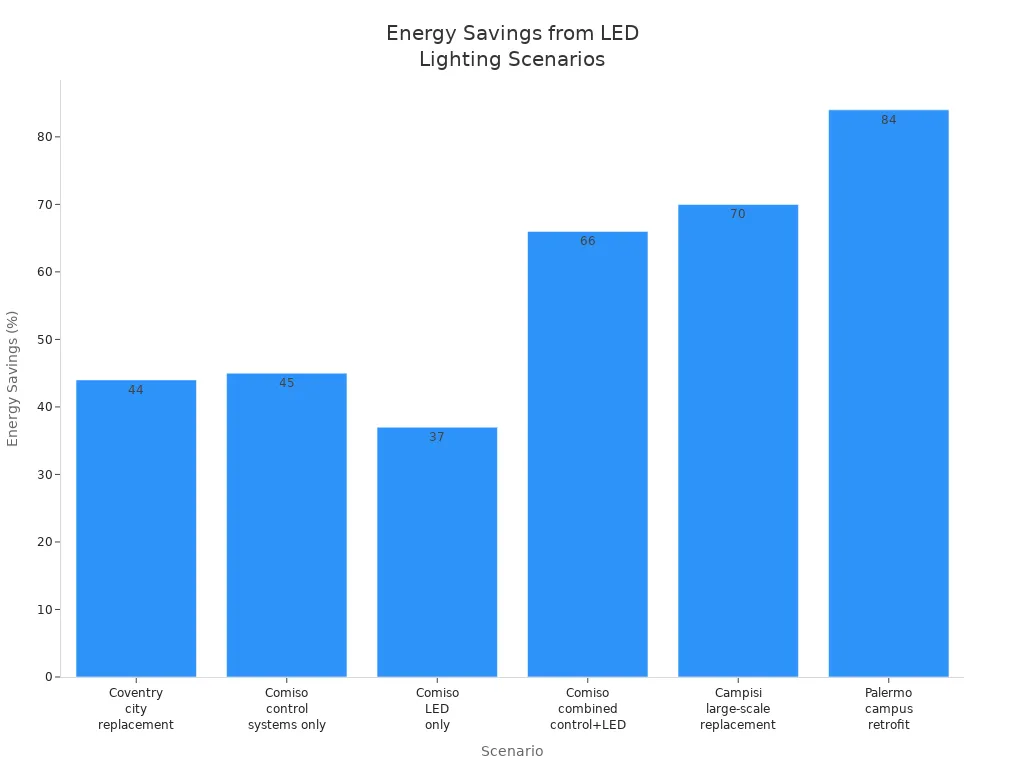
LED paper also helps you manage energy better. You can change how bright it is and when it turns on. This stops you from wasting energy. LED paper is a smart pick for people who want to help the planet and save money.
Flexibility and Design
You want lights that match your ideas. LED paper lets you make new shapes and styles. You can bend it, cut it, or wrap it around corners. This means you can put light in hard places, like on columns or slopes.
Designers like LED paper because it is thin and simple to use. You can stick it on walls, ceilings, or furniture. You do not need special tools. Plug-and-play connectors let you join many sheets together. You can make custom signs, glowing art, or soft backlights.
Tip: Try LED paper for projects that need special shapes or patterns. You can make your space look cool and modern.
LED paper gives you new ways to use light. You can change a room or store with just a few sheets. This design freedom is a big reason people like LED paper.
Durability and Lifespan
You want lights that last for years. LED paper lasts longer than most other lights. The best LED products can work up to 100,000 hours. In real life, LED paper will work for many years with little care.
LED paper often works for 25,000 to 200,000 hours.
Most fluorescent bulbs last only 7,000 to 15,000 hours.
LED paper needs almost no care.
LED lighting is strong and does not break easily.
You save money because you do not have to buy new lights often.
LED paper does not just last longer. It keeps working well over time. You might see a slow change in color or brightness, but you will not get sudden burnouts like old bulbs. This means you get steady light and fewer problems.
Sustainability
You want to help the earth. LED paper is good for the environment and helps you use less energy. This means less carbon goes into the air. The materials in LED paper are often safer and easier to recycle than old lights.
LED paper also helps the planet because it lasts longer. You throw away fewer bulbs and use less packaging. This means less trash and helps keep the earth clean. Many LED paper products use safe materials for people and nature.
Note: When you pick LED paper, you help make the world cleaner. You help lower pollution and save resources for the future.
LED paper gives you many good things. You get energy savings, design freedom, long life, and less harm to the planet. You also save money and help the earth. This makes LED paper a smart choice for better lighting and a better world.
LED Paper vs. Traditional Lighting
Performance
You want your lighting to look bright and natural. LED paper gives you high brightness because it converts about 95% of energy into light. Traditional lighting, like incandescent or fluorescent bulbs, wastes most energy as heat. You get more light from LED sheets with less power. LED lighting systems also let you pick from a wide range of color temperatures, from warm to cool. Some systems even offer full RGB colors, so you can match any mood or style.
LED paper handles heat better than old lighting. Only about 5% of energy turns into heat. Good thermal management, like heat sinks or small fans, keeps the LEDs cool. This helps your lighting last longer and keeps colors true. Incandescent bulbs get hot fast and can change color over time. Fluorescent lamps also lose brightness and waste about 30% of energy as heat.
Here is a quick comparison:
Criteria | LED Sheets | Traditional Lighting (Incandescent/Fluorescent) |
|---|---|---|
Brightness | Converts 95% of energy into light, high luminance, glare control needed | Less efficient; most energy wasted as heat, lower luminance |
Color Rendering | Wide color temperature range (2200K–6000K), full RGB options | Limited color range (e.g., 2700K–4100K) |
Heat Management | Only 5% of energy as heat, needs heat sinks or fans | Incandescent: most energy as heat; Fluorescent: 30% as heat |
Tip: LED lighting systems give you more control over brightness and color. You can create the perfect look for any space.
Cost and Maintenance
You want to save money and avoid extra work. LED paper helps you do both. LED lighting systems use less energy, so your bills go down. You do not need to replace LED sheets often. They last much longer than traditional lighting. Incandescent bulbs burn out quickly. Fluorescent lamps need regular changes and can break easily.
LED paper also cuts down on maintenance. You spend less time fixing or replacing lights. LED lighting systems often come with smart controls. You can set timers or dim the lights to save even more energy. This means less waste and fewer trips to the store for new bulbs.
LED paper lasts up to 100,000 hours.
Traditional lighting may last only 7,000 to 15,000 hours.
LED lighting systems need less cleaning and fewer repairs.
Note: When you choose LED lighting systems, you invest in long-term savings and less hassle. You help the planet by using less energy and creating less waste.
LED Lighting Technology in Modern Solutions
Smart Lighting
Smart lighting makes rooms brighter and saves energy. LED lighting technology works with smart systems for more control. Many new lights use the Internet of Things (IoT). This lets you connect your lights to your phone or computer. You can turn lights on or off from anywhere. You can also change colors or set times for lights. This makes life easier and helps you use less energy.
LED lighting technology lets you use volumetric lighting in cool ways. You can make lighting scenes that change when you want. For example, set lights to wake you up or help you relax. LED volumetric lighting works in homes, offices, and public places. You get better light and lower bills. Smart lighting also helps the planet by saving power.
Tip: Try smart LED lighting technology for dynamic volumetric lighting in your living room. You can change the mood with a tap.
Color and Brightness Control
You can control color and brightness with LED paper and other LED lighting technology. This gives you many choices for your space. LED volumetric lighting lets you pick warm or cool colors. You can also make lights brighter or dimmer. This helps you focus or relax.
Many lights now let you change colors anytime. You can use LED volumetric lighting to make patterns or highlight spots. Volumetric lighting spreads light evenly in every part of the room. LED lighting technology supports effects like fading or flashing. You can use these for parties, events, or every day.
Here is a quick list of what you can do with color and brightness control:
Change the color of your lighting to match your mood.
Adjust the brightness for reading, working, or sleeping.
Use dynamic lighting to create special effects.
Set up LED volumetric lighting for even, soft light.
LED lighting technology lets you design your own lighting. You can enjoy flexible, dynamic, and energy-saving lights every day.
Installation and Selection
Choosing LED Paper
You want the best lighting for your space. Start by thinking about your project goals. Look at the type of lighting source you need. LED paper works well for many solutions, but sometimes you may need other types like fluorescent or halogen for special tasks. Check the brightness and color of the light. Make sure it matches what you want for your room or project.
Think about these points when you choose LED paper:
Project Needs: Decide how much light you need. Use foot-candles or lumens to measure this. Pick a product with a good warranty and a long life. Check if the product fits your budget and timeline.
Technical Details: Look at the wattage and power needs. Check the color rendering index (CRI) for true colors. Choose the right color temperature for your mood. Make sure the product has a high lumen output and good efficiency.
Application Fit: Match the LED paper to your use. For example, use flexible sheets for curved walls or rigid ones for flat surfaces. Make sure the product has the right IP rating if you use it outdoors or in wet places.
Safety and Compatibility: Pick LED paper with UL or CE certifications. Make sure it works with your power supply and any dimming controls you want to use.
Tip: Always match the spectral output of your lighting to any sensors or cameras you use for the best results.
Installation Tips
You can install LED paper in many ways. Start by cleaning and drying the surface. Only cut the sheets along marked lines to avoid damage. Use solderless connectors for easy setup or solder for a stronger hold.
Follow these steps for a safe and smooth installation:
Prepare your surface. Make sure it is clean and dry.
Cut the LED paper only where the lines show.
Connect the sheets using the right connectors.
Mount the sheets with adhesive, screws, or magnets, depending on the surface.
Check the wiring. Make sure the power supply matches the LED paper’s needs, usually 24VDC.
Use the right dimming controller if you want to change the brightness.
Pick LED paper with the right certifications and IP rating for your space.
Fix common problems, like flickering, by checking the wiring and power supply.
Note: Always use trained installers for large projects. This keeps your lighting safe and long-lasting. Get the right permits and follow local rules for big installations.
You can enjoy modern lighting solutions that are safe, efficient, and easy to use when you follow these tips.
Real-World Examples
Commercial Projects
LED paper is used in many businesses today. Stores use it to make displays that catch your eye. Hotels put LED paper in lobbies and halls to look modern and friendly. Offices use volumetric lighting with LED paper to make work areas brighter. Museums and galleries like LED paper because it bends and fits anywhere. They use it to shine light on art or make cool lighting effects. Restaurants use LED paper to set a calm mood with soft light. These uses show how LED paper changes lighting in big places.
LED paper helps save energy and money in business spaces. You can also change how each area looks and feels.
Residential Uses
You can use LED paper at home too. Many people put LED paper in living rooms, kitchens, and bedrooms. Volumetric lighting fills rooms with soft, even light. You can use LED paper for accent lights on shelves or behind TVs. Some families put LED paper in halls or bathrooms for a modern style.
People aged 65 to 74 often add more LED lights at home.
Middle-income families save more with LED paper because they use more power.
If you change all your old lights to LED paper, you can use almost 7% less electricity.
If you only change some lights, you still save about 2% on your bill.
People in new or owned homes use more LED lighting.
Volumetric lighting makes every room feel brighter and nicer. You get lower bills and a modern look. LED paper works for main lights or fun accent lights. It gives you a flexible and smart way to light your home.
Troubleshooting LED Paper
Common Issues
You may face some problems when you use LED paper. Knowing what to look for helps you fix things fast. Here are some common issues and what you can do:
Flickering Lights: This often happens when the power supply does not match the LED paper’s needs. Check if the voltage and current are correct.
Dim or Uneven Lighting: You might see some areas look darker. This can mean loose connections or damaged sections. Make sure all connectors are tight and the sheet is not cut in the wrong place.
No Power: If your LED paper does not turn on, check the power source first. Look at the wiring and see if any fuses have blown.
Overheating: LED paper usually stays cool. If it feels hot, you may have covered it with something or used the wrong power supply.
Color Shifts: Sometimes, the color changes over time. This can happen if the LEDs get too hot or if the sheet is old.
Tip: Always turn off the power before you check or fix your LED paper. This keeps you safe.
Here is a quick table to help you spot and solve problems:
Problem | Possible Cause | What You Can Do |
|---|---|---|
Flickering | Wrong power supply | Check voltage and current |
Dim spots | Loose connection | Tighten connectors |
No light | Power issue | Check wiring and fuses |
Overheating | Blocked airflow | Remove covers, check power |
Color change | Aging or heat | Replace if needed |
Maintenance Tips
You want your LED paper to last a long time. Good care helps you avoid problems and keeps your lights bright.
Clean Gently: Use a soft, dry cloth to wipe dust away. Do not use water or harsh cleaners.
Check Connections: Look at the connectors every few months. Make sure they stay tight and free from dust.
Avoid Bending Too Much: Flexible LED paper bends well, but do not fold it sharply. This can break the circuits inside.
Keep Dry: Water can damage LED paper. Use it only in dry places unless it has a waterproof rating.
Watch for Heat: Make sure nothing covers the LED paper. Good airflow keeps it cool and working well.
Note: If you see any damage, replace the sheet or ask a professional for help. Taking care of your LED paper helps it shine bright for years.
LED paper has many good things for modern lighting.
It uses much less energy than old bulbs, up to 220 lm/W.
You spend less money because making it is now much cheaper.
You get better colors and more ways to light your space.
Technology is getting better fast, and more people use it.
New ideas help make LED paper cheaper and more useful.
LED paper is also good for the earth. New designs, like using recycled solid board, cut carbon by 83% and make less trash. You can pick lights that are lighter, can be recycled, and are better for nature. Try LED paper for your next project or ask someone who knows for help with special uses.
FAQ
What makes LED paper different from regular LED lights?
You get a thin, flexible sheet with LED paper. Regular LED lights use bulbs or tubes. LED paper bends, cuts, and fits in tight spaces. You can use it for creative designs that standard lights cannot match.
Can you install LED paper by yourself?
Yes, you can install LED paper on your own. Clean the surface, cut along marked lines, and use connectors. Always follow the instructions. For large projects, ask a professional for help.
Is LED paper safe to touch when it is on?
You can touch LED paper while it is on. It stays cool and does not get hot like old bulbs. This makes it safe for homes, schools, and public spaces.
How long does LED paper last?
LED paper lasts much longer than most lights. You can expect it to work for 25,000 to 100,000 hours. You will not need to replace it often.
Can you recycle LED paper?
Many LED paper products use recyclable materials. You should check the packaging or ask the maker. Recycling helps protect the environment and reduces waste.
See Also
Exploring LED Digital Signage: Uses, Tech, And Advantages
Different LED Sign Types And Effective Deployment Methods
Upcoming Innovations And Trends In LED Digital Signage
Guide To Acrylic LED Light Boxes: Uses And Setup
Energy-Saving Acrylic Box Lighting Options For Contemporary Areas
